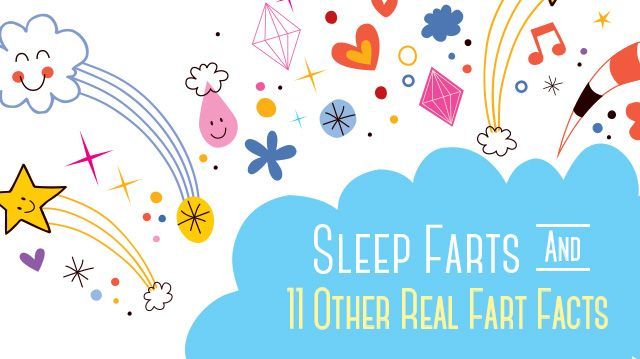
Most of us don’t spend a lot of time thinking about farts: most of us probably wish they didn’t happen at all. Sure, there are those who like to fart for fun and those who like to light them on fire (yes, it’s possible, but dangerous), but for a lot of people, farts are little more than a source of embarrassment.
However, maybe we shouldn’t be so embarrassed about our flatulence. It’s smelly and can happen at inconvenient times, but it happens to everyone. So maybe we should stop judging each other, and especially ourselves, for passing a bit of gas now and then. After all, it’s relieving and feels a heck of a lot better than holding it in.
Perhaps the key to banishing all the stigma we have about farts is to learn more about them. Check out these 12 facts about farts. Whether you think of learning about farts as getting to know your enemy or becoming more closely acquainted with a bodily friend, read on to discover a lot about farts that you may not have known!
- Most farts occur when a person is asleep. If you hold in your farts during the day, they’ll likely find their way out while you’re snoozing.
- On average, humans fart about 14 times per day. You can deny them all you want, but they still happen!
- The word “fart” comes from the Old English word “feortan.” This literally translates into “to break wind.”
- Hippocrates, the Greek physician known as the Father of Western medicine, is credited with saying that “passing gas is necessary to well-being.” This makes sense, as holding in farts has been associated with headaches and hemorrhoids. Plus, it’s downright uncomfortable — not so great for mental well-being either!
- The pungent smell that many farts are notorious for is produced by a gas known as hydrogen sulphide, which accounts for about one percent of fart gas. The rest of the fart is composed of, in order of volume, nitrogen, hydrogen, carbon dioxide, methane and oxygen.
- A silent fart usually smells worse than a loud one because there is less air to dilute the sulfur. An unfair trade-off, it seems: silent but smelly versus loud but less obvious. Which will you choose?
- Cruciferous vegetables (kale, broccoli, cauliflower, cabbage and Brussels sprouts), dairy, eggs, garlic, red meat and baked goods are a few of the most fart-inducing foods. However, don’t forgo the green veggies for fear of farts — those sulfur compounds are incredibly healthy!
- Beans can make you fart, but these farts are not likely to be of the super-smelly variety.
- Due to a more highly concentrated sulfur content, the farts of females may smell worse than the farts of males. Sorry, ladies.
- For the Yanomami tribe of northern Brazil and southern Venezuela, a fart is used as a greeting. It’s certainly an exuberant way to say hello!
- Farts can travel out of us at a speed of 10 feet per second. That’s pretty fast for such a small cloud of gas.
- A person can fart up to three hours after they die — this is due to gases leaving the body post-mortem — and can continue until the onset of rigor mortis. Yikes.
We’re all human — so relax, pass the kale wraps and accept the humble fart for what it is: completely natural.
—Tanya Rakhmilevich
Tanya is a writer at The Alternative Daily with a passion for meditation, music, poetry, and overall creative and active living. She has a special interest in exploring traditional Eastern remedies and superfoods from around the globe, and enjoys spending time immersed in nature.
Sources:
http://zomoetdat.nl/thefartfacts.com/index.html
http://www.scoopwhoop.com/inothernews/crazy-fart-facts
http://www.buzzfeed.com/mattpagourgis/fart-facts-that-will-make-you-gasp?utm_term=.lqJORMXZM
http://www.survivalinternational.org/tribes/yanomami

